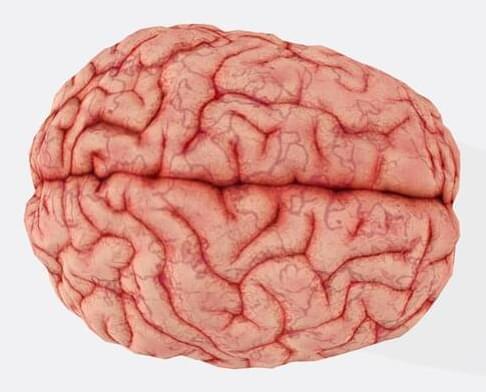A professor of physics explains how mind-bending quantum experiments are blurring the line between past, present and future. Further, he argues, these experiments, which factor in ‘the relevance of the future to the present’, may demand a radical rethinking of quantum experimentation itself.
Clues to the season of impact lingered in delicate fish fossils.
Around 66 million years ago, springtime in the Northern Hemisphere brought disaster and mass death to Earth in the form of a giant asteroid impact that triggered a global extinction.
A year after it took biologists by surprise, AlphaFold has changed how researchers work and set DeepMind on a new course.
More recently, digital twins have been the focus of a European Union-funded project that seeks to clone a patient’s entire brain. Dubbed Neurotwin, the research project aims to create virtual models that can be used to predict the effects of stimulation for the treatment of neurological disorders—including epilepsy and Alzheimer’s disease. When it comes to epilepsy, non-invasive stimulations (where electrical currents are painlessly delivered to the brain) have proven effective in tackling seizures. Given how drugs don’t help a third of epilepsy patients, the technology is coveted yet needs refinement. This is where virtual clones come in.
“The digital avatar is essentially a mathematical model running on a computer,” Giulio Ruffini, coordinator of the Neurotwin project, told WIRED. Including a network of embedded “neural mass models,” the technology hopes to create a map of the neural connections in the brain—a concept termed as the ‘connectome’. “In the case of epilepsy, some areas of the connectome could become overexcited,” the outlet mentioned. “In the case of, say, stroke, the connectome might be altered.” Once the digital clone has been created by the team, with about half an hour-worth of magnetic resonance imaging (MRI) data and ten minutes of electroencephalography (EEG) readings to capture electrical activities and realistically simulate the brain’s main tissues (including the scalp, skull, cerebrospinal fluid, and grey and white matter), it can then be used to optimise stimulation of the real patient’s brain.
According to Ruffini, this is possible “because we can run endless simulations on the computer until we find what we need. It is, in this sense, like a weather forecasting computational model.”
No he does not respond to the resveratrol challenges. Important here are the chapters concerning Resetting the Ageing Clock and Repeatable Ageing Reversal.
In the final episode of this season, Dr. David Sinclair and Matthew LaPlante focus on current and near-future technologies relevant to health and aging. In addition to discussing the utility of wearable sensors and biological age measurements, they highlight innovative research aimed at reversing biological age. The societal effects of therapies that successfully extend healthspan and/or lifespan are also considered.
#DavidSinclair #Longevity #Aging.
Thank you to our sponsors:
Levels — https://levels.link/sinclair.
Athletic Greens — https://athleticgreens.com/sinclair.
InsideTracker — https://insidetracker.com/sinclair.
Our Patreon page:
Cartography could be changing forever as an advanced tool moves from the lab to the real world. A new quantum gravity sensor helps overcome an issue raised by Einstein.
Public policy includes efforts by governmental as well as nongovernmental agencies (other than professional associations) to manage genetic enhancement. For example, the International Olympic Committee has a policy on performance-enhancing drugs in sport. In the United States, the Food and Drug Administration classified synthetic anabolic steroids as a restricted class of drugs, making it more difficult to get access to them. Such measures will not always be successful. Epoetin alfa (EPO) is a useful medication for the many people who suffer from chronic anemia, including people who must undergo regular renal dialysis. As a consequence, it is in very wide supply for legitimate therapeutic purposes, unlike the synthetic anabolic steroids. Imposing strict limitations on access to EPO would create an enormous inconvenience for the large number of people who benefit from the drug. The fact that some athletes are able to get their hands on EPO is an unintended consequence of having the drug widely available for legitimate therapeutic uses. The appropriate public policy will not be the same, necessarily, for every drug.
By “personal policy” we mean the moral understandings and social practices of individuals, parents, and families, including those moral convictions that would cause them to refrain from unwise or unfair use of genetic enhancement technologies. The Worth of a Child, for example, focuses on ethical issues involving children and parents.11 How does one engage that sort of personal policy response? The means we have are limited but powerful: education, public dialogue, and the encouragement of ethical reflection.
In conclusion, there are four points worth reiterating. First, as we think about genetic enhancement, we should use a broad definition of genetic-enhancement technologies, not merely gene manipulation, but indirect genetic technologies, such as biosynthetic drugs. Second, we should try to anticipate the enhancement temptations of new therapies. Such anticipation may help us in shaping the marketing, availability, or other aspects of those technologies. Third, we should promote the adoption of appropriate public and professional policies. Finally, we should provide public education and dialogue to encourage personal ethical reflection on the appropriate uses and limits of genetic-enhancement technologies.
This cosmic cloud of gas and dust is about 5,000 light-years away.
“I had vowed never to sell that guitar,” Gill tells Inverse. “But I spent some more time [on astrophotography] in the last few years so I think I’ve gotten a bit more into it, and spent some more money on it.”
Gill’s latest image features a cosmic landscape of newborn stars, gas, and dust.
The Rosette Nebula shines in this deep-space image captured by Gill from his backyard in Santa Clarita, Los Angeles. Its fusion of gases illuminates the center of the image, while the nebula’s stellar inhabitants spread across the dark skies. For Gill to capture such detail from the smoggy, bright skies of Los Angeles is not easy, and requires a lot of patience, practice, and hours of exposure.
“Ocean Battery resolves a societal challenge to provide access to renewable power generation without destabilizing the power grid and meet our climate goals. The Dutch Water engineers resolved this problem in a brilliant yet simple way with a tremendous amount of creativity, innovation power and Dutch entrepreneurship,” the press release continues.
Keep reading for more on this exciting new piece of technology, that could be revolutionary for the transition to cleaner means of energy.
Coin cells are useful things that allow us to run small electronic devices off a tiny power source. However, they don’t have a lot of capacity, and they can run out pretty quickly if you’re hitting them hard when developing a project. Thankfully, [bobricius] has just the tool to help.
The device is simple – it’s a PCB sized just so to fit into a slot for a CR2016 or CR2032 coin cell. The standard board fits a CR2016 slot thanks to the thickness of the PCB, and a shim PCB can be used to allow the device to be used in a CR2032-sized slot instead.
It’s powered via a Micro USB connector, and has a small regulator on board to step down the 5 V supply to the requisite 3 V expected from a typical coin cell. [bobricius] also gave the device a neat additional feature – a pair of pads for easy attachment of multimeter current probes. Simply open the jumper on the board, hook up a pair of leads, and it’s easy to measure the current being drawn from the ersatz coin cell.







